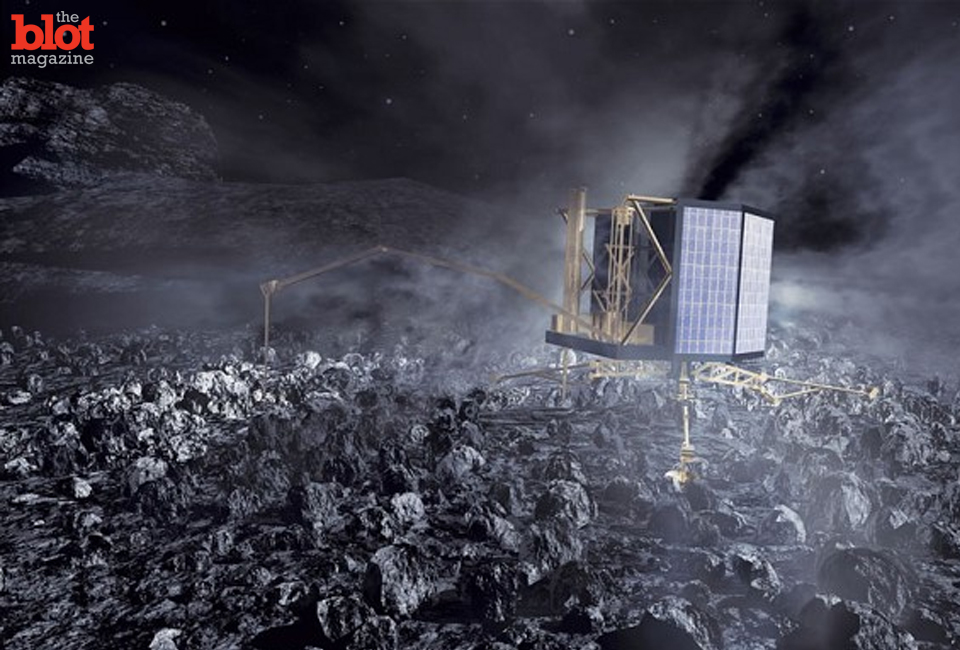
A few years ago, NASA set a nuclear-powered SUV-sized rover down on Mars in a multi-staged landing sequence that was dubbed “7 minutes of terror.” Not to be outdone by NASA’s scientific and engineering brethren across the pond, the folks at the European Space Agency (ESA) have now successfully plopped a probe down onto the surface of a moving comet.
Thanks to decades of hard work, and pinpoint precision, the ESA’s Rosetta space probe was able to intercept comet 67P/Churyumov-Gerasimenko, match its speed and then release a Philae lander, which touched down on the frozen exterior of the comet yesterday at at 16:03 GMT (17:03 CET) local time.
And if that feat isn’t impressive enough, all of this happened after the Rosetta probe (launched in 2004) traveled 6.4 billion kilometers (about 4 billion miles) over the course of a decade in order to reach its target, took images of the comet’s surface, shot those images back to control and then released a lander down to the recently chosen Agilkia landing site while the comet and the probe were speeding though space at 66,000 kilometers per hour (41,000 mph) at a distance of 510 million kilometers (317 million miles) from Earth. Not even the “Fast and Furious” film franchise could have pulled off a crazy stunt like that.
ESA Director General Jean-Jacques Dordain stated on ESA’s official website that, “Our ambitious Rosetta mission has secured a place in the history books: not only is it the first to rendezvous with and orbit a comet, but it is now also the first to deliver a lander to a comet’s surface.” Not too shabby, even if, as project scientists believe, the craft’s harpoon anchors failed to deploy. (Hopefully the lander will sit still and not float off into space.)
While some human beings have a hard time building a birdhouse, others are building rocket ships that can plunk hitchhikers down on hurtling comets. While the desire to explore and perhaps colonize Mars someday isn’t going anywhere soon, for now deeply curious eyes will be focused on ESA’s continuing mission (ring any bells, “Star Trek” fans?) on comet 67P/Churyumov-Gerasimenko.
The close-up study of the comet should serve up a wealth of scientific knowledge about the comet itself, how our solar system was formed and perhaps even how comets could have helped kick-start life on Earth by acting as interstellar vessels carrying the “seeds” necessary for water and life.
And since several NASA instruments were included on the Rosetta mission, there’s no reason why ESA and NASA can’t continue to combine forces and land probes, rovers and people on distant celestial bodies. Maybe we’ll even get to take a peek at the oceans lying beneath the ice of Jupiter’s moon Europa one day by landing a drilling probe on its frosty surface and seeing if anything living is lurking below.
Carl Pettit is a contributing journalist for TheBlot Magazine.





